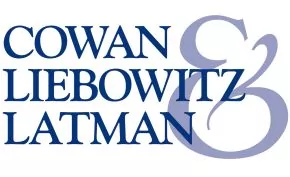Mark your calendar: January 1, 2003. On that fateful day, untold billions of works now subject to copyright protection will go into the public domain simultaneously, and unless you act now, some of your clients' works may inadvertently be among them. Under § 303 of the 1976 Copyright Act, works created before 1978 but not previously published or registered lost their perpetual common-law copyright protection and became subject to a finite statutory term. Thus Congress ensured that every letter Jack Kerouac ever wrote to his mother, every notebook sketch by Matisse, every Mozart counterpoint exercise, would eventually, someday, lose its copyright protection.
For works created by authors who died in 1932 or earlier, that day is January 1, 2003. If the author died in 1933 or later, or is still living, the term of copyright in an unpublished work will subsist through the last day of the 70th calendar year after the author's death, whenever that may occur.
Whether the day of reckoning is 2003 or some later date, however, it can be postponed until the end of 2047 simply by publishing the work in question on or before December 31, 2002. Note that authors who are still living, or who died during or after 1977, do not stand to benefit from this additional term of protection even if they publish, because the standard life-plus-70 term will carry their works beyond the end of 2047. Note also that the additional term of protection extends only to works published before the end of 2002. Thus while § 303 sets the copyright term for all works not previously published or registered, registration alone will not suffice to take advantage of the additional time period granted by the statute.
If you have clients, such as the estates of long-deceased authors, who stand to benefit from this additional protection and who are willing to make their heretofore private works accessible to the public, there are several efficient, inexpensive ways which may be sufficient to effect publication of the works prior to the impending deadline, even if conventional publication is not an option:
World Wide Web
Publication is defined in § 101 as the "distribution of copies . . . to the public," and "copies" in turn are defined as material objects in which works of authorship are fixed. Although the posting of material on a website does not technically result in the distribution of tangible copies, the Copyright Office has taken the position that works made generally accessible through the World Wide Web may be considered published. See Circular 66 "Copyright Registration of Online Works". This is perhaps the quickest and cheapest means of making unpublished works available to the public, but it has not yet been blessed by the courts.
Library Deposit
The definition of publication in § 101 expressly encompasses distribution to the public by "rental, lease or lending," and both the courts and the Copyright Office have acknowledged that making works available for "unrestricted access" in a public library is sufficient to constitute publication. See Copyright Office Compendium II (1984) at § 905.03; Wright v. Warner Books, 748 F. Supp. 105 (S.D.N.Y. 1990) (sale of author's letters by copyright owner to Yale library, with no restrictive agreements required as condition of access, deemed publication); but cf. Salinger v. Random House, 811 F.2d 90 (2d Cir. 1987)(library deposit of author's letters by recipients, with restrictive agreements signed as condition of access, deemed not publication).
Free Distribution
In addition to the Web and the public library, works can effectively be published by simply making copies freely available to the public without restriction. The Copyright Office Compendium II notes (at § 905.02) that making an unrestricted gift of copies, giving them away on the street, or leaving them in a public place to be picked up are all sufficient to effect publication. As with any form of publication, the key element is that the works be available to the general public, without restriction as to who may have access or what use may be made of the published material.
The content of this article is intended to provide a general guide to the subject matter. Specialist advice should be sought about your specific circumstances

